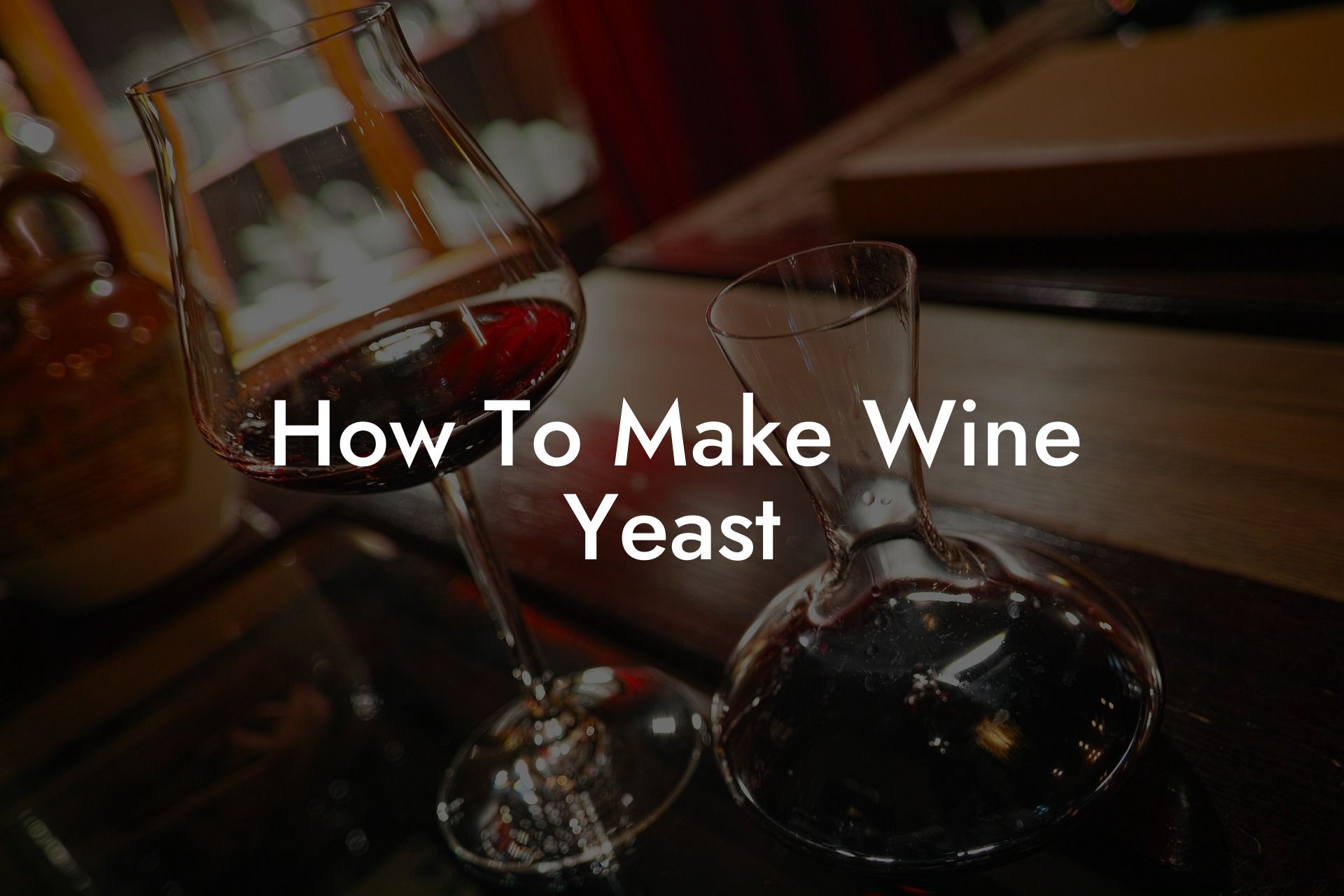Hey there, fellow wine enthusiasts! Are you ready to become more than just a wine lover but also a wine maker? Making your own homemade wine by fermenting grape juice or other fruit mixtures is an exciting and rewarding journey. One vital ingredient you can't overlook is wine yeast, responsible for ethanol production during fermentation. So, let's dive into understanding what wine yeast is, how to make it, and how to use it in your DIY wine making adventures!
How To Make Wine Yeast Table of Contents
What is Wine Yeast?
Wine yeast is a type of microorganism, specifically Saccharomyces cerevisiae, responsible for converting sugars in grape juice into ethanol, producing the alcoholic content of wine. It also creates CO2 and several flavor compounds during fermentation, influencing a wine's taste, aroma, and mouthfeel.
Types of Wine Yeast
There are several strains of wine yeast, each with its distinct characteristics. Some yeasts are fast fermenters, while others work at a slower pace. Some strains are better at enhancing fruity or floral aromas, while others contribute to a more full-bodied or complex flavor profile. Knowing the characteristics of different wine yeast strains allows you to control the fermentation process and fine-tune the final product to your taste preferences.
Do You Want to Win a Free Bottle of Wine?
Don't miss out on the opportunity to win a free bottle of wine every week.
Enter our weekly prize draw today!
Natural vs. Commercial Yeasts
- Natural Yeasts: These wild yeasts are found naturally on grape skins and in vineyard environments. Using natural yeasts can lead to unique and exciting flavor profiles, but it can also be less predictable and harder to control throughout fermentation.
- Commercial Yeasts: These specially cultured yeasts are produced by companies, allowing for more consistency and predictability during fermentation. These yeasts are often designed to work best at specific temperatures or with particular grape varieties, making it easier to achieve a desired outcome.
How To Make Wine Yeast
Making wine yeast sounds complicated, but it's quite simple! You can either use natural yeast found in fruit or buy commercial yeast. Here's how to get started:
1. Using Natural Yeast
- Collect fresh, ripe, and clean grapes or other fruits. Avoid using any damaged, moldy, or otherwise compromised fruit.
- Crush the fruit to create a pulp, and let it sit at room temperature in a sanitized container for 24 hours. This will allow natural yeasts to begin fermenting the sugars in the fruit.
- After 24 hours, strain the juice from the pulp and transfer it to a fermentation vessel (like a sanitized carboy or Mason jar).
- Add an airlock or similar device to the fermentation vessel to allow CO2 to escape without letting air in. Let the juice ferment for 5-7 days or until fermentation activity slows down.
- Once fermentation slows down, it's time to separate the wine from the sediment (called "racking"). Siphon the wine into a clean, sterilized container, leaving the sediment behind. Close the container with an airtight lid, and let it mature for a few months before bottling and enjoying your creation!
2. Using Commercial Yeast
- Choose a wine yeast strain that matches your desired wine style and grape variety.
- Follow the manufacturer's instructions on how to rehydrate and prepare the commercial yeast.
- Add the hydrated yeast to the prepared grape juice, which has been properly crushed and strained.
- Follow the same steps as for natural yeast, including fermentation, racking, and maturation.
How To Make Wine Yeast Example:
Imagine you've picked some delicious wild blackberries and want to make a fruity and aromatic homemade wine. You choose to use a commercial yeast that enhances fruity flavors and works well at cooler fermentation temperatures. You prepare the juice, hydrate the yeast, and add it to the juice, allowing for a slow and controlled fermentation. After several weeks, you rack the wine and let it mature, resulting in a beautifully balanced blackberry wine with a vibrant fruitiness and a pleasant aroma.
There you have it - a comprehensive guide on how to make wine yeast for homemade wine making! Now that you're equipped with this knowledge, why not give it a try and experience the satisfaction and artistry of crafting your very own wine? Don't forget to share your wine making adventures, tips, and discoveries with the Black Wine Club community. Together, we'll continue to learn, create, and enjoy fantastic wines. Cheers!
Do You Want to Win a Free Bottle of Wine?
Don't miss out on the opportunity to win a free bottle of wine every week.
Enter our weekly prize draw today!












